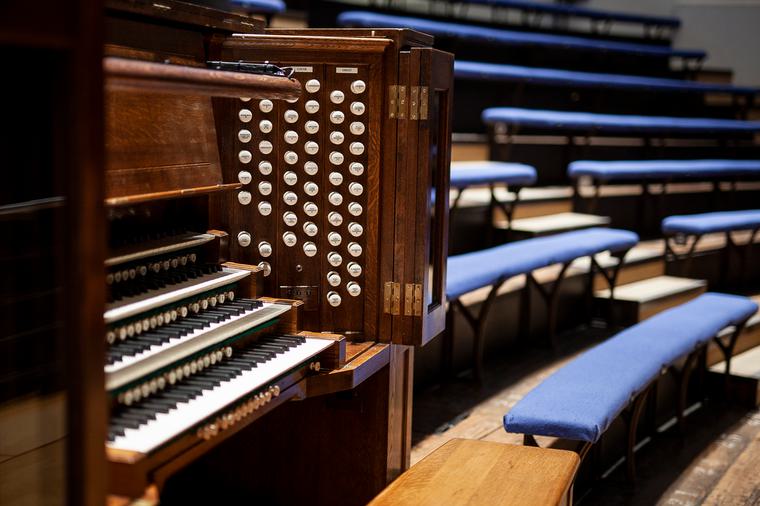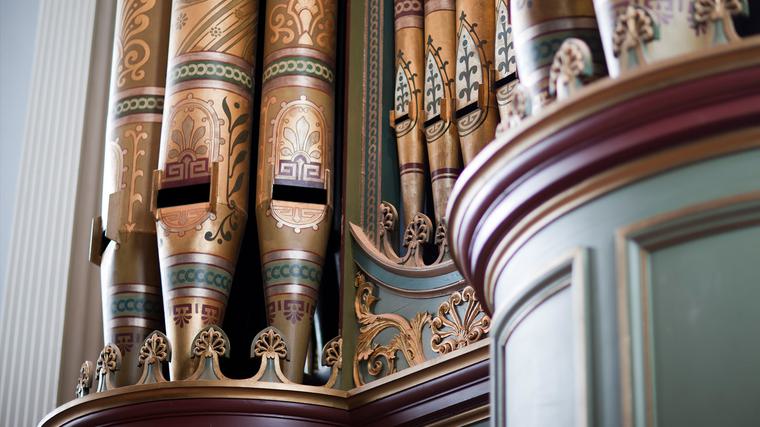Town Hall Organ
/ Town Hall HistoryTown Hall Organ

The organ was originally commissioned and owned by the General Hospital of Birmingham, with the instrument being handed over to the City of Birmingham in March 1890. The organ builder was William Hill, who was commissioned by the Governors of the General Hospital in Birmingham to build the instrument at a total cost of £3,000.
Upon its opening in 1834, visitors to Birmingham Town Hall were awestruck not only by the building’s impressive Roman Revival civic architecture, but also by the magnificence of its specially commissioned organ.
What made the organ so immediately and visually impressive to those first audiences were the huge 32 foot pipes that were, for the first time in England, incorporated into the decorative case front.
One of the very few organs of the time to have four manuals and a complete set of pedals, the size of the organ grew over the years, from 3,000 to 6,000 pipes.
Paid for from public funds, the instrument was a record breaker; being the largest organ in England at the time. Even today it is still comparable with the most powerful of cathedral organs around the world.
The organ’s reputation as one of England’s finest historical instruments has been confirmed by the excellence and reputation of the Birmingham City Organists who have continued to demonstrate the instrument’s versatility.
How does this Organ measure up?
The Town Hall Organ is 70 foot high.
The organ case is as tall as two double-decker buses stood end on end.
The largest metal pipe is 35 foot and 3 inches long, equivalent to the height of an average house.
The largest wooden pipe has an interior measurement of 24 cubic ft, and would hold enough water to fill 7 bath tubs.
The organ originally had 3000 pipes; today it has over 6000.

"splendidly embellished"
The organ case has been decorated three times in its history. The first time it was decorated by the Crace family who had earlier undertaken much work at Brighton Pavilion, including the lavishly exotic music room there.
Contemporary descriptions said that “under the direction of Mr Crace of London” the organ case was “splendidly embellished, and the pipes gilt, with scrolls.” The Craces also decorated the Hall’s ceiling at the same time.
A second redecoration of the case was made in 1890 by John Henry Chamberlain, a Birmingham architect. The current and third decoration was by Anna Plowden who undertook her work during the 1983 refurbishment to the organ.
Rebuilds of the organ were made in 1889 by Thomas Hill (William’s son); in 1932 by Henry Willis III; and in 1983 by N P Mander. The organ was also refurbished in readiness for the re-opening of the Hall in October 2007.